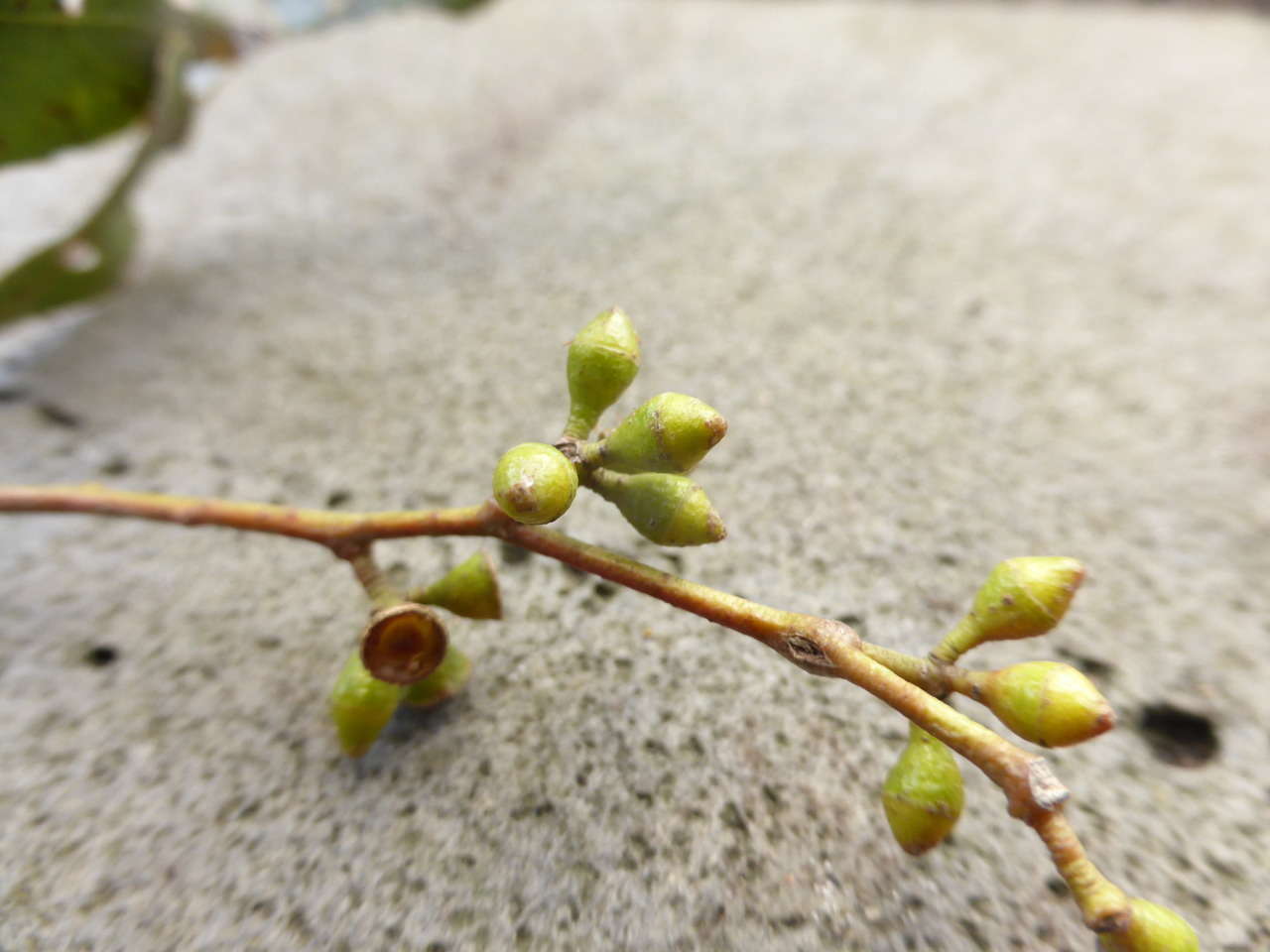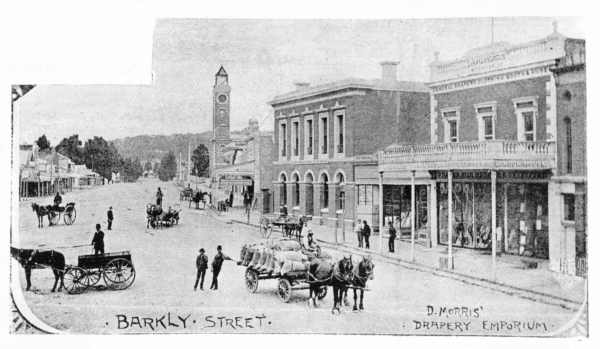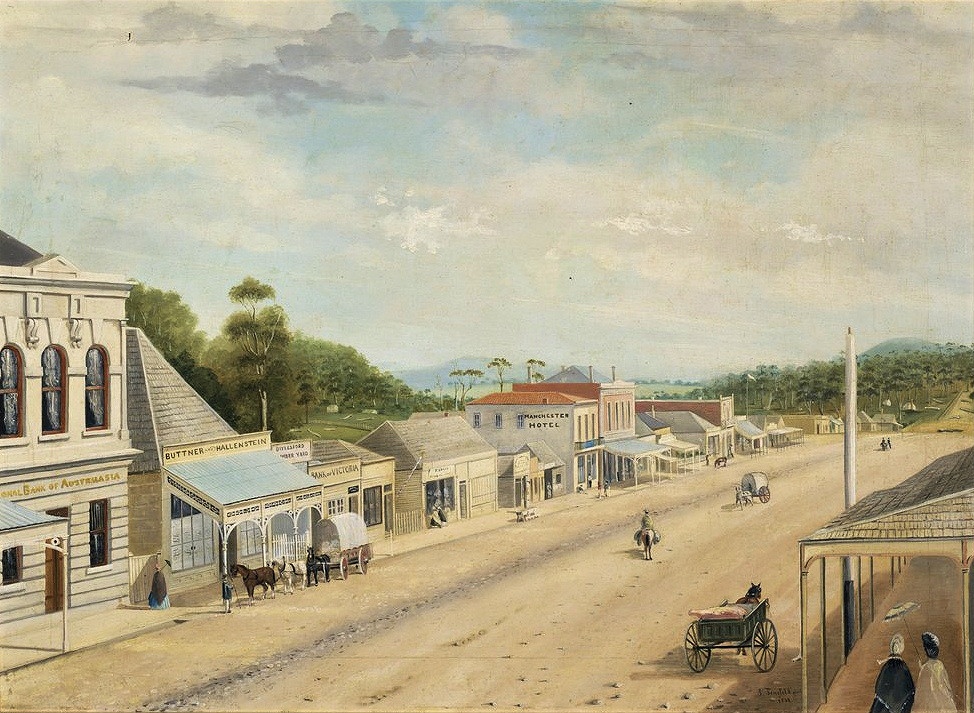|
Eucalyptus Yarraensis
''Eucalyptus yarraensis'', commonly known as Yarra gum, is a tree species that is endemic to Victoria, Australia. It has rough bark on the trunk and larger branches, lance-shaped to elliptical or egg-shaped adult leaves, flower buds in groups of seven, white flowers and conical fruit. In 2021 the Victorian Government listed it as critically endangered under the Flora and Fauna Guarantee Act. Description ''Eucalyptus yarraensis'' is a tree that typically grows to a height of and forms a lignotuber. It has rough, fibrous, brown or greyish bark on the trunk and larger branches, smooth white to cream-coloured bark above. Young plants and coppice regrowth have glossy green, elliptical to egg-shaped leaves that are long and wide. Adult leaves are arranged alternately, the same shade of glossy green on both sides, lance-shaped to elliptical or egg-shaped, long and wide, tapering to a petiole long. The flower buds are arranged in leaf axils in groups of seven on an unbranched ... [...More Info...] [...Related Items...] OR: [Wikipedia] [Google] [Baidu] |
Arthurs Creek, Victoria
Arthurs Creek is a town in Victoria, Australia, 33 kilometres north-east of Melbourne's Central Business District, located within the Shire of Nillumbik local government area. Arthurs Creek recorded a population of 478 at the . It is named after Henry Arthur, a member of John Batman's Port Phillip Association and nephew of George Arthur, a governor of Tasmania. Another source says that it was named by the surveyor Thomas Nutt, supposedly because one of his party, a Mr Arthur, died and was buried in this location. History The proclamation of the Duffy Land Act in 1862 saw the beginning of the permanent settlement at Arthurs Creek. Arthurs Creek began as a horticultural settlement with numerous orchards, with the Post Office opening on 7 October 1889 (it closed in 1972). After the First World War, cattle and sheep farms replaced orchards as the principal industry. Today, the land-holdings of Arthurs Creek are a mixture of smaller farm properties including vineyards, orchar ... [...More Info...] [...Related Items...] OR: [Wikipedia] [Google] [Baidu] |
Operculum (botany)
In botany, an operculum () or calyptra () is a cap-like structure in some flowering plants, mosses, and fungus, fungi. It is a covering, hood or lid, describing a feature in plant morphology. Flowering plants In flowering plants, the operculum, also known as a calyptra, is the cap-like covering or "lid" of the flower or fruit that detaches at maturity. The operculum is formed by the fusion of sepals and/or petals and is usually shed as a single structure as the flower or fruit matures. The name is also used for the capping tissue of roots, the root cap. In eucalypts, (including ''Eucalyptus'' and ''Corymbia'' but not ''Angophora'') there may be two opercula - an outer operculum formed by the fusion of the united sepals and an inner operculum formed by the fusion of the sepals. In that case, the outer operculum is shed early in the development of the bud leaving a scar around the bud. In those species that lack an outer operculum, there is no bud scar. The inner operculum is sh ... [...More Info...] [...Related Items...] OR: [Wikipedia] [Google] [Baidu] |
Eucalyptus
''Eucalyptus'' () is a genus of over seven hundred species of flowering trees, shrubs or mallees in the myrtle family, Myrtaceae. Along with several other genera in the tribe Eucalypteae, including '' Corymbia'', they are commonly known as eucalypts. Plants in the genus ''Eucalyptus'' have bark that is either smooth, fibrous, hard or stringy, leaves with oil glands, and sepals and petals that are fused to form a "cap" or operculum over the stamens. The fruit is a woody capsule commonly referred to as a "gumnut". Most species of ''Eucalyptus'' are native to Australia, and every state and territory has representative species. About three-quarters of Australian forests are eucalypt forests. Wildfire is a feature of the Australian landscape and many eucalypt species are adapted to fire, and resprout after fire or have seeds which survive fire. A few species are native to islands north of Australia and a smaller number are only found outside the continent. Eucalypts have been grow ... [...More Info...] [...Related Items...] OR: [Wikipedia] [Google] [Baidu] |
Trees Of Australia
The flora of Australia comprises a vast assemblage of plant species estimated to over 30,000 vascular and 14,000 non-vascular plants, 250,000 species of fungi and over 3,000 lichens. The flora has strong affinities with the flora of Gondwana, and below the family level has a highly endemic angiosperm flora whose diversity was shaped by the effects of continental drift and climate change since the Cretaceous. Prominent features of the Australian flora are adaptations to aridity and fire which include scleromorphy and serotiny. These adaptations are common in species from the large and well-known families Proteaceae (''Banksia''), Myrtaceae (''Eucalyptus'' - gum trees), and Fabaceae ('' Acacia'' - wattle). The arrival of humans around 50,000 years ago and the settlement by Europeans from 1788, has had a significant impact on the flora. The use of fire-stick farming by Aboriginal people led to significant changes in the distribution of plant species over time, and the ... [...More Info...] [...Related Items...] OR: [Wikipedia] [Google] [Baidu] |
Flora Of Victoria (state)
Flora is all the plant life present in a particular region or time, generally the naturally occurring (indigenous) native plants. Sometimes bacteria and fungi are also referred to as flora, as in the terms ''gut flora'' or '' skin flora''. Etymology The word "flora" comes from the Latin name of Flora, the goddess of plants, flowers, and fertility in Roman mythology. The technical term "flora" is then derived from a metonymy of this goddess at the end of the sixteenth century. It was first used in poetry to denote the natural vegetation of an area, but soon also assumed the meaning of a work cataloguing such vegetation. Moreover, "Flora" was used to refer to the flowers of an artificial garden in the seventeenth century. The distinction between vegetation (the general appearance of a community) and flora (the taxonomic composition of a community) was first made by Jules Thurmann (1849). Prior to this, the two terms were used indiscriminately.Thurmann, J. (1849). ''Essai de Phy ... [...More Info...] [...Related Items...] OR: [Wikipedia] [Google] [Baidu] |
List Of Eucalyptus Species
The following is an alphabetical list of ''Eucalyptus'' species accepted by the Australian Plant Census as at February 2019. Several species only occurring outside Australia, including '' E. orophila'', '' E. urophylla'' and '' E. wetarensis'' are listed at the World Checklist of Selected Plant Families. A * '' Eucalyptus abdita'' Brooker & Hopper * '' Eucalyptus absita'' Grayling & Brooker – Badgingarra box * '' Eucalyptus acaciiformis'' H.Deane & Maiden – wattle-leaved peppermint * '' Eucalyptus accedens'' W.Fitzg. – powderbark wandoo * '' Eucalyptus acies'' Brooker – Woolburnup mallee * '' Eucalyptus acmenoides'' Schauer in W.G.Walpers – white mahogany * ''Eucalyptus acroleuca'' L.A.S.Johnson & K.D.Hill – Lakefield coolibah * '' Eucalyptus adesmophloia'' (Brooker & Hopper) D.Nicolle & M.E.French * '' Eucalyptus aequioperta'' Brooker & Hopper – Welcome Hill gum * ''Eucalyptus agglomerata'' Maiden – blue-leaved stringybark * ''Eucalyptus aggregata'' H.Deane & ... [...More Info...] [...Related Items...] OR: [Wikipedia] [Google] [Baidu] |
Ararat, Victoria
Ararat ( Djabwurrung: ''Tallarambooroo'') is a city in south-west Victoria, Australia, about west of Melbourne, on the Western Highway on the eastern slopes of the Ararat Hills and Cemetery Creek valley between Victoria's Western District and the Wimmera. Its urban population according to 2021 census is 8,500 and services the region of 11,880 residents across the Rural City's boundaries. It is also the home of the 2018/19 GMGA Golf Championship Final. It is the largest settlement in the Rural City of Ararat local government area and is the administrative centre. The discovery of gold in 1857 during the Victorian gold rush transformed it into a boomtown which continued to prosper until the turn of the 20th century, after which it has steadily declined in population. It was proclaimed as a city on 24 May 1950. After a decline in population over the 1980s and 90s, there has been a small but steady increase in the population, and it is the site of many existing and future, large ... [...More Info...] [...Related Items...] OR: [Wikipedia] [Google] [Baidu] |
Daylesford, Victoria
Daylesford is a spa town located in the foothills of the Great Dividing Range, within the Shire of Hepburn, Victoria (Australia), Victoria, Australia, approximately 108 kilometres north-west of Melbourne. First established in 1852 as a gold-mining town, today Daylesford has a population of 2,548 as of the 2016 Australian census, 2016 census. As one of Australia’s few spa towns, Daylesford is a notable tourist destination. The town’s numerous spas, restaurants and galleries are popular alongside the many gardens and country-house-conversion styled bed and breakfasts. The broader area around the town, including Hepburn Springs, Victoria, Hepburn Springs to the north, is known for its natural spring mineral spas and is the location of over 80 per cent of Australia's effervescent mineral water reserve. It is also the filming location for the third season of ''The Saddle Club'', and scenes from the 2004 film ''Love's Brother''. History Prior to European settlement the area was ... [...More Info...] [...Related Items...] OR: [Wikipedia] [Google] [Baidu] |
Healesville
Healesville is a town in Victoria, Australia, 52 km north-east from Melbourne's central business district, located within the Shire of Yarra Ranges local government area. Healesville recorded a population of 7,589 in the 2021 census. Healesville is situated on the Watts River, a tributary of the Yarra River. History Traffic to the more distant Gippsland and Yarra Valley goldfields in the 1860s resulted in a settlement forming on the Watts River and its survey as a town in 1864. It was named after Richard Heales, the Premier of Victoria from 1860–1861. The post office opened on 1 May 1865. The town became a setting off point for the Woods Point Goldfield with the construction of the Yarra Track in the 1870s. Climate Present Healesville is known for the Healesville Sanctuary, a nature park with hundreds of native Australian animals displayed in a semi-open natural setting and an active platypus breeding program. The Yarra Valley Railway operates from Healesville ... [...More Info...] [...Related Items...] OR: [Wikipedia] [Google] [Baidu] |
Yarra Valley
The Yarra Valley is the region surrounding the Yarra River in Victoria, Australia. The river originates approximately east of the Melbourne central business district and flows towards it and out into Port Phillip Bay. The name Yarra Valley is used in reference to the upper regions surrounding the Yarra River and generally does not encompass the lower regions including the city and suburban areas, where the topography flattens out, or the upper reaches which are in inaccessible bushland. Included in the Yarra Valley is the sub-region of the Upper Yarra Valley which encompasses the towns of the former Shire of Upper Yarra in the catchment area upstream of and including Woori Yallock. The Yarra Valley is a popular day-trip and tourist area, featuring a range of natural features and agricultural produce, as well as the Lilydale to Warburton Rail Trail. The Yarra Valley is host to a thriving wine growing industry. The area's relatively cool climate makes it particularly suited ... [...More Info...] [...Related Items...] OR: [Wikipedia] [Google] [Baidu] |
Richard Hind Cambage
Richard Hind Cambage (7 November 1859 – 28 November 1928) was an Australian surveyor and botanist who made important contributions to the description of the genera ''Acacia'' and ''Eucalyptus''. Early life Cambage, son of John Fisher Cambage, was born at Applegarth near Milton, New South Wales. He was educated at state and private schools (including Ulladulla Public School), and for a short time was a teacher at the Milton State School. In 1878 he became an assistant to M. J. Callaghan, surveyor, and took part in the survey of National Park in 1879 and 1880. On 11 July 1881 at the Elizabeth Street registry office, Sydney, he married Fanny Skillman (d.1897), daughter of the headteacher at Ulladulla. Surveying career He qualified as a licensed surveyor in June 1882, was engaged in the Department of Lands for three years as a draftsman and then entered the department of mines as a mining surveyor on 16 February 1885. In 1900 he carried out a difficult and dangerous survey of ... [...More Info...] [...Related Items...] OR: [Wikipedia] [Google] [Baidu] |
Capsule (botany)
In botany a capsule is a type of simple, dry, though rarely fleshy dehiscent fruit produced by many species of angiosperms (flowering plants). Origins and structure The capsule (Latin: ''capsula'', small box) is derived from a compound (multicarpeled) ovary. A capsule is a structure composed of two or more carpels. In (flowering plants), the term locule (or cell) is used to refer to a chamber within the fruit. Depending on the number of locules in the ovary, fruit can be classified as uni-locular (unilocular), bi-locular, tri-locular or multi-locular. The number of locules present in a gynoecium may be equal to or less than the number of carpels. The locules contain the ovules or seeds and are separated by septa. Dehiscence In most cases the capsule is dehiscent, i.e. at maturity, it splits apart (dehisces) to release the seeds within. A few capsules are indehiscent, for example those of ''Adansonia digitata'', ''Alphitonia'', and '' Merciera''. Capsules are often classifie ... [...More Info...] [...Related Items...] OR: [Wikipedia] [Google] [Baidu] |








.jpg)

.png)